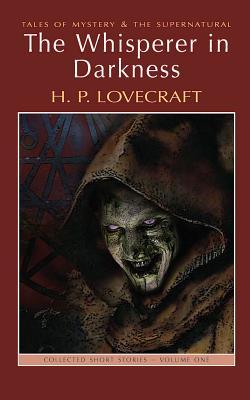The Old Ones
As to what the things were—explanations naturally varied. The common name applied to them was “those ones”, or “the old ones”, though other terms had a local and transient use. Perhaps the bulk of the Puritan settlers set them down bluntly as familiars of the devil, and made them a basis of awed theological speculation. Those with Celtic legendry in their heritage—mainly the Scotch-Irish element of New Hampshire, and their kindred who had settled in Vermont on Governor Wentworth’s colonial grants—linked them vaguely with the malign fairies and “little people” of the bogs and raths, and protected themselves with scraps of incantation handed down through many generations. But the Indians had the most fantastic theories of all. While different tribal legends differed, there was a marked consensus of belief in certain vital particulars; it being unanimously agreed that the creatures were not native to this earth.
The Pennacook myths, which were the most consistent and picturesque, taught that the Winged Ones came from the Great Bear in the sky, and had mines in our earthly hills whence they took a kind of stone they could not get on any other world. They did not live here, said the myths, but merely maintained outposts and flew back with vast cargoes of stone to their own stars in the north. They harmed only those earth-people who got too near them or spied upon them. Animals shunned them through instinctive hatred, not because of being hunted. They could not eat the things and animals of earth, but brought their own food from the stars. It was bad to get near them, and sometimes young hunters who went into their hills never came back. It was not good, either, to listen to what they whispered at night in the forest with voices like a bee’s that tried to be like the voices of men. They knew the speech of all kinds of men—Pennacooks, Hurons, men of the Five Nations—but did not seem to have or need any speech of their own. They talked with their heads, which changed colour in different ways to mean different things.
All the legendry, of course, white and Indian alike, died down during the nineteenth century, except for occasional atavistical flareups. The ways of the Vermonters became settled; and once their habitual paths and dwellings were established according to a certain fixed plan, they remembered less and less what fears and avoidances had determined that plan, and even that there had been any fears or avoidances. Most people simply knew that certain hilly regions were considered as highly unhealthy, unprofitable, and generally unlucky to live in, and that the farther one kept from them the better off one usually was. In time the ruts of custom and economic interest became so deeply cut in approved places that there was no longer any reason for going outside them, and the haunted hills were left deserted by accident rather than by design. Save during infrequent local scares, only wonder-loving grandmothers and retrospective nonagenarians ever whispered of beings dwelling in those hills; and even such whisperers admitted that there was not much to fear from those things now that they were used to the presence of houses and settlements, and now that human beings let their chosen territory severely alone.
Notes:
Folksonomies: otherness
Taxonomies:
/sports/hunting and shooting (0.518333)
/science/phyiscs/atomic physics (0.514709)
/society (0.448636)
Keywords:
old ones (0.924805 (positive:0.593516)), certain vital particulars (0.897366 (positive:0.309447)), awed theological speculation (0.896569 (positive:0.517972)), infrequent local scares (0.870063 (negative:-0.391926)), certain hilly regions (0.858006 (neutral:0.000000)), occasional atavistical flareups (0.849800 (negative:-0.430942)), certain fixed plan (0.845269 (neutral:0.000000)), Celtic legendry (0.759091 (neutral:0.000000)), Winged Ones (0.735779 (positive:0.360552)), instinctive hatred (0.728774 (negative:-0.767205)), Puritan settlers (0.726485 (negative:-0.234481)), Scotch-Irish element (0.722956 (neutral:0.000000)), Governor Wentworth (0.722243 (negative:-0.548212)), Pennacook myths (0.719687 (neutral:0.000000)), New Hampshire (0.718107 (neutral:0.000000)), malign fairies (0.716726 (negative:-0.548212)), earthly hills (0.715245 (neutral:0.000000)), fantastic theories (0.713511 (positive:0.294240)), vast cargoes (0.713008 (neutral:0.000000)), little people (0.711638 (negative:-0.617271)), Great Bear (0.710605 (positive:0.360552)), different tribal (0.708972 (neutral:0.000000)), wonder-loving grandmothers (0.703947 (negative:-0.334369)), young hunters (0.703574 (negative:-0.414089)), habitual paths (0.701651 (neutral:0.000000)), human beings (0.697168 (negative:-0.368545)), retrospective nonagenarians (0.692715 (negative:-0.334369)), nineteenth century (0.692698 (negative:-0.405352)), different things (0.688445 (neutral:0.000000)), different ways (0.685377 (neutral:0.000000))
Entities:
New Hampshire:StateOrCounty (0.681079 (neutral:0.000000)), avoidances:Person (0.665716 (neutral:0.000000)), Vermont:StateOrCounty (0.665596 (negative:-0.548212))
Concepts:
Fear (0.922042): dbpedia | freebase | opencyc
House (0.744779): dbpedia | freebase
Claustrophobia (0.737374): dbpedia | freebase | opencyc
Old One (0.712000): dbpedia | freebase | yago
Hill (0.708194): dbpedia | freebase | opencyc
Metaphysics (0.683481): dbpedia | freebase | opencyc
Deep One (0.648000): dbpedia | freebase
House of Night (0.640507): website | dbpedia






